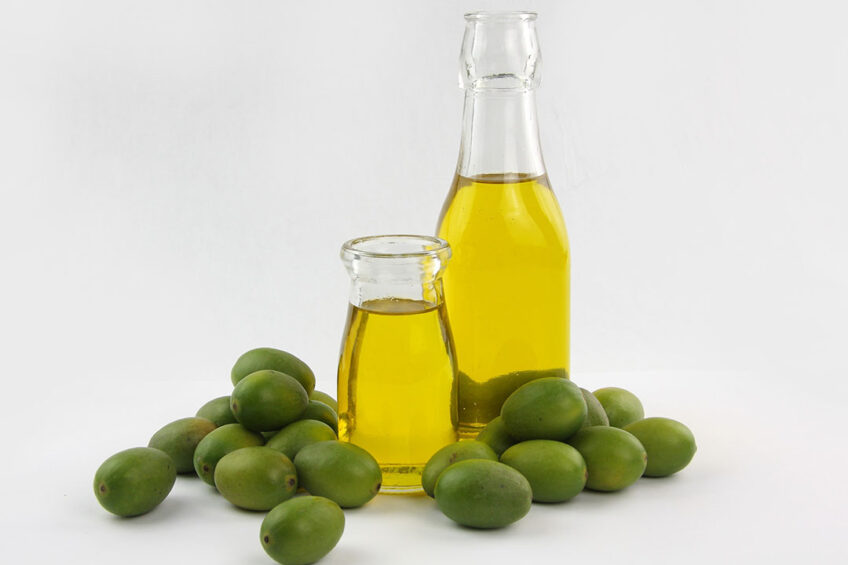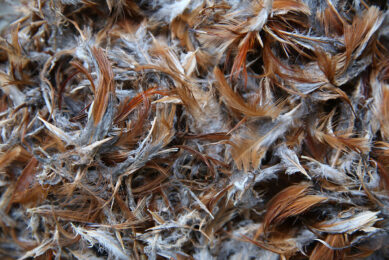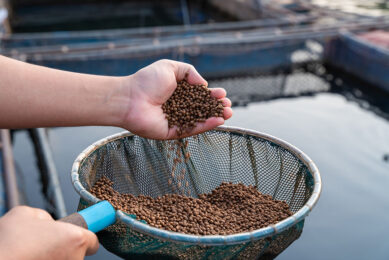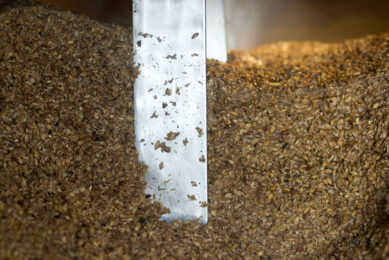Olive pulp to boost the performance of slow-growing broilers

A new study found that waste from the olive oil industry (‘olive pulp’) boosts the performance of slow-growing broilers.
The use of agro-industrial by-products in animal nutrition has recently become a key strategy for reducing feeding costs and coping with the need to recycle waste material, which is costly to dispose of and an environmental hazard.
Environmental impact of extraction process
In general, the extraction process of olive oil has a significant environmental impact due to the production of polluted wastewater and solid residue. Europe produces huge quantities of olive oil and carries the economic and environmental burdens of waste disposal. For example, Spain is the largest olive oil producer worldwide with around 1.3 million tonnes that generate wastes such as olive pomace and leaves, totalling annually more than 4.2 million tonnes, respectively (International Olive Council, 2017).
Bioactive compounds for animal health
One of the ways to take advantage of the olive oil industry wastes is to use it as animal feed. In the feed industry, recent interest is being generated in bioactive compounds (polyphenols, flavonoids, oleuropeoside, and simple phenolics) from olive by-products to enhance animal health and performance. With the current restrictions on the use of in-feed antibiotics, plant extracts rich in bioactive compounds with anti-microbial, antioxidant, and anti-inflammatory properties are promising alternatives to antibiotics. Moreover, bioactive phytochemicals can stimulate innate immunity and might provide an alternative to control coccidiosis in poultry. However, little information and inconsistent results are available on the effects of dried olive pulp on the growth performance and meat quality of slow-growing broilers.
In the current study, researchers from the University of Bari, Italy, focused on the effects of dried olive pulp on broiler growth responses and meat quality as well as on gut morphology.
The olive pulp study
The study was conducted at the Experimental Poultry Research Centre of the University of Bari, Italy. A total of 180 male slow-growing broiler chickens (Hubbard) were used in the study. On day 14, broiler chickens were individually weighed and divided among pens and randomly assigned to one of the 3 dietary treatment groups (control – no additive, 5% olive pulp or 10% olive pulp) and grown up to 49 days of age. For the first 2 weeks of age, chickens were fed the same mashed diet without dried olive pulp (DOP). Then, broilers were fed a grower-finisher pelleted diet containing either 0, 5 or 10% of DOP.
Growth performance
The findings of the present study indicated that dried olive pulp (DOP) can be included in broiler diets up to 10% without impairment of growth or feed efficiency. The inclusion of DOP at 5% and 10% improved the growth rate of slow-growing broilers by 0.6% and 1%, respectively. The feed conversion ratio (FCR) was better for the DOP-supplemented birds; the FCR for the control group was 2.30, for the 5% DOP group the FCR was 2.27, and 2.26 for the 10% DOP group. The mortality was similar but slightly lower for the DOP-supplemented birds compared to the unsupplemented group. The observed benefits on growth performance were attributed to the role of polyphenolic compounds that help reduce pathogenic microorganisms that might potentially spread in birds’ digestive organs, while also preventing the formation of toxins in feed and increasing the activity of the digestive enzymes.
In a similar study (2020) , researchers at the Polytechnic University of Madrid found that feeding olive pomace extract improves broiler growth and feed efficiency by increasing nutrient digestibility as it can affect digestive enzyme function, intestinal morphology, gastrointestinal tract motility, and bile acid secretion.
Meat yield and quality
Eviscerated carcass yield, determined after the removal of the head, neck, and feet, was approximately 74.0% in the 10% olive pulp compared to 73% in the control group. The results also showed improvements in protein and ash content of meat in the slow-growing broilers fed either the 5% DOP or 10% DOP compared to the control birds. Meat colour is an important indicator of meat quality and is one of the first characteristics noted by customers, especially in boneless products. The inclusion of DOP in the broilers’ diet significantly increased the lightness and redness of breast meat and reduced the yellowness of meat. Meat fatty acids profile was not affected by the addition of the dried olive pulp as all three dietary treatments (0%, 5% or 10% DOP) had similar amounts of total saturated fatty acids, monounsaturated fatty acids, and polyunsaturated fatty acids, including n-6 and n-3 fatty acids.
It was also interesting to note that DOP significantly improved the meat oxidation status. The meat from DOP-fed broilers had a lower thiobarbituric acid-reactive substances level compared to control broilers. The concentrations of muscle lipid hydroperoxides were also significantly reduced when broilers were fed DOP compared to the control diet. Similarly, there was a significant reduction in protein oxidation; the carbonyl levels were lower in DOP-fed birds than in the control group. diet compared to DOP-fed animals. The protein carbonyl content was used as a measure of the extent of oxidative reactions affecting muscle protein during storage. Carbonyl compounds are formed from the oxidative degradation of side chains of lysine, proline, arginine, and histidine residues.
Intestinal morphology
The duodenal villus height was significantly higher in the olive pulp-fed birds than in the control group. The villus height-to-crypt depth ratio and villus surface area was also significantly increased by the inclusion of the pulp. It was concluded that the olive pulp improves the duodenal tissue type and promotes digestion and absorption of nutrients — supporting broiler growth.
Following their findings, the researchers concluded: “Dried olive pulp in diets up to 10% supports the productive traits of slow-growing broilers, preserving meat from oxidation and improving intestinal mucosa features. Therefore, the olive by-product can be successfully used in broiler rations, resulting in a valuable ingredient as a partial replacement for conventional feeds, which could further reduce feeding costs because of the lower cost of the olive by-product.”
Source: Suitability of dried olive pulp in slow-growing broilers: performance, meat quality, oxidation products, and intestinal mucosa features. Volume 101, Issue 12, December 2022 Poultry Science (2022)











